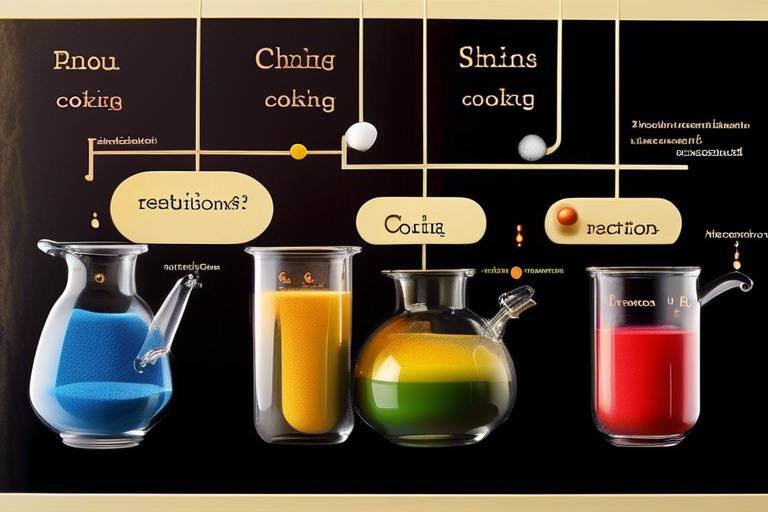How Plants Influence Indoor Air Quality - The Science
Have you ever walked into a room filled with greenery and felt an immediate sense of calm? That’s not just your imagination! Indoor plants do more than just beautify our spaces; they play a crucial role in improving indoor air quality. In a world where we often find ourselves surrounded by synthetic materials and pollutants, plants are nature's little warriors, working tirelessly to purify the air we breathe. This article explores the scientific basis behind how indoor plants can enhance air quality, discussing their benefits, mechanisms, and practical applications for healthier living environments.
The air inside our homes and offices can often be more polluted than the air outside. This is due to a variety of factors, including the presence of volatile organic compounds (VOCs) emitted from furniture, cleaning products, and even paint. Thankfully, the humble plant has evolved to combat these very issues. Through the process of photosynthesis, plants absorb carbon dioxide and release oxygen, creating a healthier atmosphere. But that's just the tip of the iceberg! The interaction between plants, air, and our indoor environments is a fascinating and complex dance of biology and chemistry.
Research has shown that certain plants can significantly reduce indoor air pollutants, making them invaluable allies in our quest for better air quality. These plants not only filter out harmful substances but also increase humidity levels, which can be beneficial for our respiratory health. As we dive deeper into the mechanisms by which plants purify air, we’ll uncover the science behind their remarkable abilities and how we can harness these benefits in our own spaces.
So, how exactly do these green companions improve air quality? It all starts with their biological processes. Plants absorb harmful substances through their leaves and roots, breaking them down into harmless compounds. This process, combined with the microbial activity in the soil, creates a dynamic system that continually cleanses the air around us. It's like having a mini air purifier that not only works silently but also adds a splash of life and color to your home or office!
In the following sections, we'll highlight some of the most effective air-purifying plants, delve into the mechanisms of air purification, and provide practical tips for integrating these green wonders into your living spaces. Whether you're a seasoned plant parent or just starting your journey into indoor gardening, this article is packed with insights that will inspire you to make your indoor environment a healthier and more inviting place.
- What types of plants are best for improving indoor air quality? Some of the best air-purifying plants include the Spider Plant, Pothos, and Snake Plant, known for their ability to filter out common indoor pollutants.
- How many plants do I need to see a difference in air quality? Generally, having at least one plant per 100 square feet can help improve air quality, but more plants can enhance the effect.
- Do indoor plants require special care? While most indoor plants are low-maintenance, they do need proper light, water, and occasional fertilization to thrive and effectively purify the air.
- Can plants help with allergies? Yes, certain plants can help reduce allergens in the air, but it’s essential to choose varieties that are non-toxic and suitable for your environment.

The Role of Photosynthesis
Photosynthesis is nothing short of a miracle that occurs right in our living spaces. It’s the **natural process** through which plants convert carbon dioxide into oxygen, and it plays a crucial role in enhancing indoor air quality. Imagine walking into a room filled with vibrant greenery, where the air feels fresher and more invigorating. That's the magic of photosynthesis at work! In simple terms, plants take in carbon dioxide, a gas that we exhale and that can accumulate indoors, and transform it into oxygen, which we breathe in. This exchange is essential for maintaining a healthy atmosphere.
But how does this process actually benefit us? Well, let’s break it down. When plants undergo photosynthesis, they not only produce oxygen but also **absorb harmful pollutants** from the air. This includes volatile organic compounds (VOCs), which are emitted by various household products and can lead to health issues over time. By having indoor plants, you’re essentially inviting nature to filter the air in your home or office. It’s like having a mini air purification system right at your fingertips!
Let’s take a closer look at the steps involved in photosynthesis:
- Light Absorption: Plants absorb sunlight through their leaves, which contains chlorophyll, the green pigment that captures light energy.
- Water Intake: Roots absorb water from the soil, which travels up through the plant.
- Carbon Dioxide Intake: Plants take in carbon dioxide from the air through tiny openings in their leaves called stomata.
- Production of Glucose and Oxygen: Using sunlight, water, and carbon dioxide, plants produce glucose (a form of sugar) and release oxygen as a byproduct.
This process not only helps to create a more breathable environment but also contributes to the overall **health of the ecosystem**. The oxygen produced is vital for all aerobic organisms, including humans. In fact, just one medium-sized houseplant can produce enough oxygen to support a small room, making it an invaluable addition to your indoor space.
Moreover, the benefits of photosynthesis extend beyond just air quality. Plants also help to regulate humidity levels, which can be particularly beneficial in dry indoor environments. They release moisture into the air through a process called transpiration, which can lead to a more comfortable living space. So, if you’ve ever felt that a room was too dry, adding some plants could be a game-changer!
In conclusion, the role of photosynthesis in improving indoor air quality is profound and multifaceted. By inviting plants into our homes, we not only enhance our surroundings aesthetically but also contribute to a healthier atmosphere. So next time you admire your leafy friends, remember that they’re doing much more than just looking pretty—they're actively working to make your indoor environment a better place to live!
Q: How many plants do I need to improve indoor air quality?
A: While there’s no one-size-fits-all answer, studies suggest that having at least two to three medium-sized plants per 100 square feet can significantly enhance air quality.
Q: Do all plants purify air equally?
A: No, not all plants have the same air-purifying capabilities. Some plants, like the Spider Plant and Pothos, are particularly effective at removing common indoor pollutants.
Q: Can I keep plants in low-light conditions?
A: Yes! Many plants, such as Snake Plants and ZZ Plants, thrive in low-light environments, making them perfect for offices or rooms with limited sunlight.

Common Air-Purifying Plants
When it comes to improving indoor air quality, not all plants are created equal. Some species stand out as champions in the battle against indoor pollutants, making them not just beautiful additions to your home or office but also essential allies for your health. These air-purifying plants have unique traits that allow them to filter out harmful toxins and enhance the overall atmosphere of any space. Let’s dive into some of the most effective air-purifying plants that you might want to consider for your indoor environment.
One of the most popular choices is the Spider Plant. This resilient little green friend is known for its ability to remove common indoor pollutants such as formaldehyde and xylene. Not only is it easy to care for, making it perfect for both beginners and seasoned plant parents alike, but it also produces adorable baby plants, or "pups," that can be propagated easily. Just imagine nurturing your Spider Plant and watching it flourish while it cleans the air around you!
Next on the list is the Pothos, a true superstar in the world of indoor plants. With its stunning heart-shaped leaves and trailing vines, Pothos can thrive in a variety of lighting conditions, from bright indirect light to low-light areas. This adaptability makes it a favorite among plant lovers. But what’s even more impressive is its ability to absorb harmful chemicals like benzene and formaldehyde, which are often found in household products. So, not only does it look good, but it also works hard to keep your air fresh and clean.
In addition to these favorites, there are several other plants that are fantastic for air purification. The Peace Lily is another excellent option, known for its beautiful white blooms and ability to remove ammonia, benzene, and formaldehyde from the air. If you’re looking for a plant that doubles as a decor piece, the Peace Lily is it! Meanwhile, the Snake Plant, also known as Mother-in-Law's Tongue, is renowned for its unique ability to convert CO2 into oxygen at night, making it a great bedroom companion.
To summarize, here’s a quick table of some common air-purifying plants and their specific benefits:
| Plant Name | Pollutants Removed | Care Level |
|---|---|---|
| Spider Plant | Formaldehyde, Xylene | Easy |
| Pothos | Benzene, Formaldehyde | Easy |
| Peace Lily | Ammonia, Benzene, Formaldehyde | Moderate |
| Snake Plant | CO2, Formaldehyde | Very Easy |
As you can see, incorporating these plants into your indoor space not only beautifies your surroundings but also contributes significantly to a healthier living environment. So, why not take a step towards better air quality? Start by choosing one or more of these air-purifying plants and watch your indoor atmosphere transform!

Spider Plant
The , scientifically known as Chlorophytum comosum, is a beloved indoor plant that has captured the hearts of many plant enthusiasts. Its charming arching leaves, which can be variegated with white or yellow stripes, not only add a touch of elegance to any space but also serve a practical purpose: they are exceptional at improving indoor air quality. This plant is often hailed as a superstar in the realm of air purifiers, primarily due to its ability to absorb harmful pollutants and convert them into oxygen. Isn't that amazing? Imagine having a green companion that not only beautifies your home but also works tirelessly to keep the air you breathe cleaner!
One of the standout features of the Spider Plant is its resilience. It can thrive in a variety of conditions, making it perfect for both novice and experienced plant owners. Whether you have bright, indirect sunlight or a shadier spot, the Spider Plant adapts beautifully. It's like that friend who can fit in anywhere, effortlessly! Plus, it’s incredibly low-maintenance. Just a little watering here and there, and it will reward you with lush growth and even produce baby plants, known as "pups," that can be propagated easily. This means you can expand your green family without much effort!
But what exactly makes the Spider Plant such an effective air purifier? Research has shown that it can remove common indoor pollutants like formaldehyde, xylene, and toluene. These substances can often be found in household items such as cleaning supplies, paints, and even furniture. By incorporating a Spider Plant into your living space, you're not just adding beauty; you're also creating a healthier environment for you and your loved ones. It’s a win-win situation!
When it comes to care, the Spider Plant is as easy as pie. Here are a few tips to keep your plant thriving:
- Light: Prefers bright, indirect sunlight but can tolerate lower light conditions.
- Water: Allow the top inch of soil to dry out between waterings.
- Soil: Well-draining potting mix is ideal.
- Fertilizer: Feed with a balanced fertilizer every few months during the growing season.
In conclusion, the Spider Plant is not just a pretty face; it’s a powerhouse of air purification that thrives in various conditions, making it an ideal choice for anyone looking to enhance their indoor environment. So, why not invite this delightful green friend into your home? You'll be amazed at the difference it can make, both aesthetically and in terms of air quality!

Pothos
Pothos, scientifically known as Epipremnum aureum, is often hailed as the ultimate indoor plant for those seeking a touch of nature in their homes or offices. With its vibrant green leaves and trailing vines, Pothos not only beautifies your space but also plays a significant role in enhancing indoor air quality. This plant is exceptionally adaptable and can thrive in various lighting conditions, making it a favorite among both novice and experienced plant lovers.
One of the most remarkable aspects of Pothos is its ability to purify the air. It effectively removes harmful pollutants such as formaldehyde, benzene, and xylene, which are commonly found in household products and furnishings. Imagine coming home after a long day, greeted not just by a lovely sight but also by cleaner air—now that’s what Pothos brings to the table!
Taking care of Pothos is a breeze, which is another reason it has gained popularity. Here are some essential care tips to keep your Pothos thriving:
- Light: Pothos prefers indirect sunlight but can tolerate low light conditions. Just avoid placing it in direct sunlight, as this can scorch its leaves.
- Water: Water the plant when the top inch of soil feels dry. Overwatering can lead to root rot, so it's better to underwater than overwater.
- Soil: Use a well-draining potting mix to ensure the roots have enough oxygen and do not become waterlogged.
- Temperature: Pothos thrives in temperatures between 60°F and 80°F (15°C to 27°C). Keep it away from cold drafts.
Moreover, Pothos is not just a pretty face; it's also a survivor! This plant can bounce back from neglect and still manage to look stunning. Its trailing vines can grow several feet long, making it perfect for hanging baskets or as a decorative piece on shelves. You can even train it to climb a trellis or a moss pole, which adds an exciting vertical element to your indoor space.
Another fascinating feature of Pothos is its ability to adapt its leaf shape based on its environment. In low-light conditions, the leaves may be smaller and more heart-shaped, while in brighter light, they can become larger and more elongated. This adaptability not only showcases the resilience of the plant but also allows it to fit seamlessly into different decor styles.
In summary, Pothos is more than just an attractive plant; it’s a champion air purifier that requires minimal care. Whether you’re looking to spruce up your living room, office, or any indoor space, this plant is a fantastic choice. Its air-cleaning properties, coupled with its aesthetic appeal, make it a staple in many households. So why not bring home a Pothos today and enjoy the dual benefits of beauty and cleaner air?

Mechanisms of Air Purification
When you think about how indoor plants can transform your living space, it’s easy to focus solely on their beauty. However, the real magic happens beneath the surface, where these green wonders engage in a variety of processes that purify the air. Understanding these mechanisms not only highlights the importance of having plants indoors but also reveals how they contribute to a healthier environment.
One of the primary ways plants purify air is through their ability to absorb harmful substances. This process is known as absorption. Plants take in carbon dioxide, a gas that we exhale, and convert it into oxygen through photosynthesis. This natural exchange is essential not just for plants but for all living beings. But that’s not all; plants also absorb a range of volatile organic compounds (VOCs) that can be detrimental to our health. These compounds are often emitted from common household items like paints, cleaning products, and furniture. By absorbing these pollutants, plants help to create a cleaner and safer indoor atmosphere.
Another fascinating mechanism at play is adsorption. Unlike absorption, which involves the uptake of a substance, adsorption occurs when pollutants cling to the surface of plant leaves and stems. This process can trap harmful particles, preventing them from circulating in the air. Think of it like a sponge soaking up water; the plant's surface area acts as a barrier that captures unwanted chemicals, thereby reducing their concentration in your home.
But wait, there’s more! The soil that supports our beloved plants is teeming with life. Beneficial microbes in the soil play a significant role in air purification as well. These microorganisms break down organic matter, which can include harmful substances, and convert them into less toxic forms. This microbial activity not only enhances the quality of the soil but also contributes to overall air purification. It’s like having a team of tiny workers dedicated to keeping your air clean and fresh!
To put it all together, here’s a quick overview of the mechanisms plants use to purify air:
| Mechanism | Description |
|---|---|
| Absorption | Plants absorb carbon dioxide and VOCs, converting them into oxygen. |
| Adsorption | Pollutants cling to the surfaces of leaves and stems, reducing airborne concentrations. |
| Microbial Activity | Beneficial microbes in the soil break down harmful substances, enhancing air quality. |
In summary, the mechanisms of air purification by plants are a complex interplay of biological processes that collectively work to improve indoor air quality. By understanding these mechanisms, we can appreciate the vital role that indoor plants play not just in beautifying our spaces but also in safeguarding our health.
- Can all plants purify air? While many plants have air-purifying qualities, some are more effective than others. Research indicates that certain species, like the Spider Plant and Pothos, are particularly good at removing specific toxins.
- How many plants do I need for effective air purification? The number of plants required can vary based on the size of the room and the types of pollutants present. A general guideline is to have at least one plant per 100 square feet.
- Do I need to do anything special to maintain their air-purifying abilities? Regular care, such as watering, dusting leaves, and repotting when necessary, can help maintain the health and air-purifying capabilities of your plants.

Absorption of VOCs
Volatile Organic Compounds, or VOCs, are a group of organic chemicals that can easily evaporate at room temperature. They are commonly found in many household products, including paints, cleaning supplies, and even furniture. These compounds can significantly impact indoor air quality, leading to various health issues such as headaches, dizziness, and respiratory problems. Fortunately, indoor plants come to the rescue, acting as natural air purifiers that absorb these harmful substances.
Plants have a fascinating ability to absorb VOCs through their leaves and roots. When the air surrounding them is filled with these pollutants, plants utilize their stomata—tiny openings on the leaf surface—to take in the air, effectively capturing VOCs in the process. This natural filtration system not only helps to cleanse the air we breathe but also contributes to a healthier living environment.
But how does this absorption process work? It’s a combination of several factors, including:
- Leaf Surface Area: The larger the leaf surface area, the more VOCs can be absorbed. Plants like the Spider Plant and Pothos are particularly effective due to their extensive foliage.
- Root Activity: Roots play a crucial role in absorbing VOCs from the soil, where some of these compounds may settle. The roots can then transfer these pollutants to the leaves, where they are processed.
- Microbial Interaction: The soil around plant roots is teeming with beneficial microbes that can break down VOCs into less harmful substances. This symbiotic relationship enhances the plant's ability to purify the air.
To illustrate the effectiveness of various plants in absorbing VOCs, consider the following table:
| Plant Species | Common VOCs Absorbed | Effectiveness |
|---|---|---|
| Spider Plant | Formaldehyde, Xylene | High |
| Pothos | Benzene, Formaldehyde | Very High |
| Peace Lily | Ammonia, Benzene | High |
| Rubber Plant | Formaldehyde | Moderate |
Incorporating these plants into your indoor spaces can significantly reduce the levels of VOCs, promoting a healthier atmosphere. Not only do they purify the air, but they also add a touch of nature to your home or office, creating a more inviting and aesthetically pleasing environment.
So, the next time you feel a bit sluggish or notice a strange odor in your living space, consider adding some indoor plants to your decor. They might just be the natural remedy you need to breathe easier and feel better!
Q: How many plants do I need to purify the air in my home?
A: The number of plants needed depends on the size of the space and the types of VOCs present. Generally, having one plant per 100 square feet is a good starting point.
Q: Can all indoor plants absorb VOCs?
A: Not all plants are equally effective at absorbing VOCs. Some species, like the Spider Plant and Pothos, are particularly well-known for their air-purifying capabilities.
Q: How do I care for my air-purifying plants?
A: Regular watering, appropriate light conditions, and occasional fertilization are essential for keeping your plants healthy and maximizing their air-purifying abilities.

Microbial Activity in Soil
When we think about plants and their role in improving indoor air quality, we often focus on their visible parts—the leaves and stems. However, the real magic happens beneath the surface, in the soil. plays a crucial role in enhancing air quality by acting as a natural filter for harmful substances. But what exactly does this mean? Let's dive into the fascinating world of soil microbes and their contributions.
Soil is teeming with life. In fact, a single teaspoon of healthy soil can contain billions of microorganisms, including bacteria, fungi, and protozoa. These tiny organisms are not just passive residents; they actively engage in various processes that contribute to air purification. For instance, they help break down organic matter, releasing nutrients that plants can absorb while simultaneously transforming harmful substances into less toxic forms.
One of the key functions of soil microbes is their ability to degrade volatile organic compounds (VOCs), which are common indoor pollutants emitted from everyday products like paints, cleaning agents, and furniture. Microbial metabolism allows these organisms to consume VOCs as a food source, effectively reducing their concentration in the air. In this way, they act as a natural detoxifier, making our indoor environments safer and healthier.
Moreover, the interactions between plant roots and soil microbes create a symbiotic relationship that enhances the overall health of both parties. Plants release organic compounds into the soil, which serve as food for microbes. In return, microbes help plants absorb essential nutrients and water, promoting their growth and vitality. This relationship not only benefits the plants but also contributes to a more robust microbial community, further enhancing air quality.
To illustrate the importance of microbial activity in soil, consider the following table:
| Microbial Function | Impact on Air Quality |
|---|---|
| Degradation of VOCs | Reduces harmful indoor pollutants |
| Nutrient Cycling | Enhances plant growth, leading to more oxygen production |
| Soil Structure Improvement | Promotes healthy root systems, improving plant resilience |
In summary, the microbial activity in soil is a vital component of indoor air quality enhancement. By breaking down harmful compounds and supporting plant health, these microorganisms play a significant role in creating a cleaner, healthier living environment. So, next time you admire your indoor plants, remember that there's a bustling community of microbes working tirelessly beneath the soil, contributing to your well-being in ways you might not have imagined.
- What types of microbes are found in soil? The most common types include bacteria, fungi, and protozoa, all of which contribute to nutrient cycling and decomposition.
- How do plants and soil microbes interact? Plants release organic compounds that feed soil microbes, while microbes help plants absorb nutrients and protect them from pathogens.
- Can I enhance microbial activity in my indoor plants? Yes, maintaining healthy soil through proper watering, aeration, and organic amendments can boost microbial populations.

Benefits Beyond Air Quality
When we think about the advantages of having indoor plants, the first benefit that often comes to mind is their ability to improve air quality. However, the perks of incorporating greenery into our living and working spaces extend far beyond just cleaner air. Imagine walking into a room filled with vibrant plants; it’s like stepping into a mini oasis that not only revitalizes the air you breathe but also your mood and overall well-being. Isn’t that a delightful thought?
Studies have shown that plants can significantly enhance our psychological health. Just picture this: you’re sitting at your desk, staring at a dull wall, and suddenly, you glance over at a lush fern or a cheerful pothos. Instantly, your mind feels lighter, and you might even notice a boost in your creativity. This isn’t merely coincidental; research indicates that the presence of plants can reduce stress levels, enhance concentration, and even improve productivity. It’s like having a natural stress-reliever right in your home or office!
Moreover, plants can serve as natural humidifiers. They release moisture vapor during transpiration, which can help maintain a comfortable humidity level in your indoor environment. This is particularly beneficial during dry seasons when indoor air tends to become parched. A well-hydrated atmosphere can alleviate issues like dry skin, sore throats, and respiratory problems. So, not only do plants beautify our spaces, but they also contribute to our physical comfort.
Let’s not overlook the aesthetic appeal that plants bring to our interiors. They can transform a bland corner into a vibrant focal point, adding life and color to any room. Whether it’s a towering fiddle leaf fig or a delicate peace lily, plants can complement various interior design styles, from minimalist to bohemian. It’s like adding a piece of nature’s art to your home!
In addition to their aesthetic and psychological benefits, indoor plants can also promote social interaction. Imagine hosting a gathering and having guests gravitate towards a beautifully arranged plant display. It can serve as a conversation starter, allowing people to share their experiences and tips about plant care, or simply marvel at the beauty of nature. This social aspect can foster a sense of community and connection, which is invaluable in our increasingly digital world.
Finally, let’s talk about the environmental impact of having indoor plants. While they purify the air, they also play a role in reducing our carbon footprint. By improving air quality and promoting a healthier lifestyle, plants encourage us to spend more time indoors in a sustainable manner. It’s a win-win situation where we can enjoy the comforts of home while being mindful of our ecological footprint.
In summary, the benefits of indoor plants stretch far beyond just air purification. They enhance our mental health, improve our physical environment, elevate our interior aesthetics, foster social connections, and contribute to a sustainable lifestyle. So, the next time you consider adding a plant to your space, remember that you’re not just bringing home a piece of nature; you’re inviting a multitude of benefits that can enrich your life in ways you might not have imagined!
- How do indoor plants improve mental health?
Indoor plants can reduce stress and anxiety, boost mood, and enhance productivity, creating a more pleasant environment. - Can plants really help with humidity levels?
Yes, plants release moisture vapor during transpiration, which can help maintain a comfortable humidity level indoors. - What are some easy-to-care-for indoor plants?
Spider plants, pothos, and peace lilies are great options for beginners due to their low maintenance requirements. - How can I incorporate plants into my home decor?
You can use plants as centerpieces, hang them in decorative pots, or create a vertical garden for an eye-catching display.

Practical Tips for Indoor Plant Care
Caring for indoor plants is more than just watering them occasionally; it’s about creating a nurturing environment that allows them to thrive. To start, you should consider the specific light requirements of each plant. Some plants, like the Spider Plant, prefer bright, indirect sunlight, while others, such as the Pothos, can adapt to low-light conditions. It’s essential to observe your plants and adjust their placement accordingly. Remember, just like us, plants have their own preferences!
Watering is another critical aspect of plant care. Overwatering can lead to root rot, while underwatering can cause leaves to wilt. A good rule of thumb is to check the top inch of the soil; if it feels dry, it’s time to water. However, be cautious! Different plants have different water needs. For instance, succulents thrive on less water, whereas tropical plants may require more frequent hydration.
Fertilizing your plants can significantly boost their growth and air-purifying capabilities. Use a balanced, water-soluble fertilizer during the growing season (spring and summer) to provide essential nutrients. Just like we need a balanced diet, plants benefit from proper nutrition too! It's advisable to follow the instructions on the fertilizer package to avoid over-fertilizing, which can harm your plants.
Additionally, humidity plays a vital role in the health of many indoor plants. Most houseplants thrive in higher humidity levels, akin to their natural habitats. If you live in a dry climate, consider using a humidifier or placing a tray of water near your plants to increase moisture in the air. Grouping plants together can also create a mini-ecosystem that boosts humidity levels.
Don’t forget about pest control! Regularly inspect your plants for signs of pests such as spider mites or aphids. If you notice any unwelcome guests, act quickly! You can use insecticidal soap or neem oil as a natural remedy to keep your plants safe. Just like we wouldn’t want uninvited guests in our home, plants appreciate a pest-free environment too!
Finally, keep your plants clean. Dust can accumulate on leaves, blocking sunlight and reducing photosynthesis. Gently wipe the leaves with a damp cloth to keep them clean and healthy. This simple act not only enhances their ability to purify the air but also makes them look vibrant and lush.
- How often should I water my indoor plants? It depends on the type of plant, but generally, check the top inch of soil. If it's dry, it's time to water.
- What are the best indoor plants for beginners? Spider Plants, Pothos, and Snake Plants are great choices for novice plant parents.
- How can I increase humidity for my indoor plants? Use a humidifier, place a tray of water nearby, or cluster plants together to create a humid microenvironment.
- What should I do if my plant has pests? Inspect regularly and treat with insecticidal soap or neem oil if you find any pests.

Integrating Plants into Interior Design
When it comes to transforming a space, is like adding a splash of color to a blank canvas. Imagine walking into a room filled with vibrant greenery; it not only catches the eye but also breathes life into the environment. Plants can be the perfect accessory, much like a statement piece of art or a cozy throw blanket. They create a harmonious balance between nature and your living space, making it feel more inviting and comfortable.
But how do you effectively incorporate plants into your interior design? First, consider the style of your space. Are you going for a modern, minimalist look or a cozy, bohemian vibe? Different plants can complement various styles. For instance, sleek succulents or a tall fiddle leaf fig can enhance a modern aesthetic, while cascading pothos or a lush fern can add a touch of warmth to a bohemian setting.
Next, think about the placement of your plants. You can create eye-catching displays by grouping plants of varying heights and textures together. Use shelves, window sills, or even hanging planters to make the most of your vertical space. A well-placed plant can serve as a focal point in a room, drawing attention and enhancing the overall design. For example, a large monstera in the corner of a living room can anchor the space, while smaller plants on a coffee table can add subtle charm.
Additionally, consider the functionality of your plants. Some plants, like the snake plant or peace lily, not only look great but also purify the air, making them perfect for bedrooms or home offices. Others, like herbs, can be both decorative and practical, providing fresh ingredients for your culinary adventures. Imagine having a small herb garden on your kitchen counter; it’s functional and adds a delightful touch of green!
In terms of color coordination, plants can serve as a beautiful contrast to your existing color palette. For instance, a vibrant green plant can pop against a neutral backdrop, while a flowering plant can introduce a dash of color that ties in with your decor. Don’t hesitate to experiment with different pots and planters, as they can also enhance the aesthetic. A rustic ceramic pot can bring a natural feel, while a sleek metal planter can add a modern twist.
Finally, remember that maintenance is key to keeping your plants healthy and your space looking great. Choose plants that fit your lifestyle; if you’re often on the go, opt for low-maintenance varieties like succulents or snake plants. On the other hand, if you enjoy gardening, you might want to experiment with a wider range of species. Regardless of your choice, ensuring that your plants are well-cared for is essential to maintaining their beauty and benefits.
In summary, integrating plants into your interior design is not just about aesthetics; it’s about creating a space that feels alive and nurturing. With the right plants and thoughtful placement, you can enhance your home or office in ways that contribute to both its beauty and your well-being.
- What are the best indoor plants for beginners? Some great options include pothos, snake plants, and spider plants, as they are low-maintenance and resilient.
- How do I choose the right plant for my space? Consider factors like light availability, humidity levels, and your lifestyle when selecting plants.
- Can indoor plants really improve air quality? Yes, many indoor plants can absorb toxins and release oxygen, contributing to better air quality.
Frequently Asked Questions
- How do plants improve indoor air quality?
Plants improve indoor air quality primarily through the process of photosynthesis, where they convert carbon dioxide into oxygen. Additionally, they absorb harmful pollutants like volatile organic compounds (VOCs) and release moisture into the air, creating a healthier atmosphere.
- Which plants are best for purifying air?
Some of the most effective air-purifying plants include the Spider Plant, known for its ease of care, and Pothos, celebrated for its resilience. Both of these plants are not only beautiful but also efficient at removing indoor toxins.
- What are VOCs, and how do plants help with them?
Volatile organic compounds (VOCs) are harmful chemicals often found in indoor environments, emitted from products like paints and cleaners. Plants help by absorbing these VOCs through their leaves and roots, effectively reducing their concentration in the air.
- Can soil microbes really improve air quality?
Absolutely! The soil associated with plants is home to beneficial microbes that break down organic matter and pollutants. This microbial activity not only supports plant health but also enhances air purification by further filtering harmful substances.
- What other benefits do indoor plants provide?
Besides improving air quality, indoor plants offer a range of benefits, including psychological advantages such as reduced stress and increased productivity. They also enhance the aesthetics of a space, making it feel more inviting and lively.
- How can I take care of my indoor plants?
To keep your indoor plants thriving, ensure they receive adequate light, water them appropriately, and use quality soil. Regularly check for pests and consider repotting them as they grow. Following these simple tips can maximize their air-purifying effects!
- What are some creative ways to integrate plants into my home decor?
You can integrate plants into your home decor by using hanging planters, placing them on shelves, or creating a small indoor garden. Consider using decorative pots that match your interior style, and don’t hesitate to mix and match different plant types for visual interest!



















